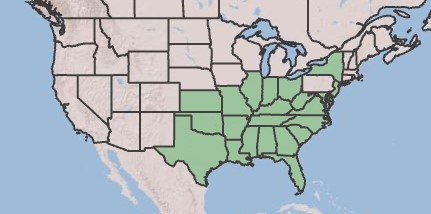Difference between revisions of "Arundinaria gigantea"
(Created page with "{{subst:Template:PlantName}}") |
|||
| (4 intermediate revisions by 2 users not shown) | |||
| Line 2: | Line 2: | ||
<!-- Get the taxonomy information from the NRCS Plants database --> | <!-- Get the taxonomy information from the NRCS Plants database --> | ||
{{taxobox | {{taxobox | ||
| − | | name = | + | | name = Arundinaria gigantea |
| image = | | image = | ||
| image_caption = Photo by | | image_caption = Photo by | ||
| regnum = Plantae | | regnum = Plantae | ||
| divisio = Magnoliophyta - Flowering plants | | divisio = Magnoliophyta - Flowering plants | ||
| − | | classis = | + | | classis = Liliopsida - Monocotyledons |
| − | | ordo = | + | | ordo = Cyperales |
| − | | familia = | + | | familia = Poaceae / Gramineae |
| − | | genus = '' | + | | genus = ''Arundinaria'' |
| − | | species = ''''' | + | | species = '''''A. gigantea''''' |
| − | | binomial = '' | + | | binomial = ''Arundinaria gigantea'' |
| − | | binomial_authority = ( | + | | binomial_authority = (Walter) Muhl. |
| − | | range_map = | + | | range_map = arun_giga_dist.jpg |
| − | | range_map_caption = Natural range of '' | + | | range_map_caption = Natural range of ''Arundinaria gigantea'' from USDA NRCS [https://plants.sc.egov.usda.gov/home/plantProfile?symbol=ARGI Plants Database]. |
}} | }} | ||
| − | Common name: | + | Common name: giant cane, river cane |
==Taxonomic Notes== | ==Taxonomic Notes== | ||
| − | Synonyms: | + | Synonyms: ''Arundinaria macrosperma'' Michaux<ref name=weakley>Weakley, A.S. 2020. Flora of the Southeastern United States. Edition of 20 October 2020. University of North Carolina at Chapel Hill, Chapel Hill, North Carolina.</ref> |
| + | |||
| + | Varieties: none<ref name=weakley/> | ||
==Description== | ==Description== | ||
<!-- Basic life history facts such as annual/perennial, monoecious/dioecious, root morphology, seed type, etc. --> | <!-- Basic life history facts such as annual/perennial, monoecious/dioecious, root morphology, seed type, etc. --> | ||
| Line 25: | Line 27: | ||
==Distribution== | ==Distribution== | ||
==Ecology== | ==Ecology== | ||
| − | + | ===Habitat=== | |
| + | ''A. gigantea'' occurs in natural areas such as bottomland forests, mesic hammocks, shallow sinkholes, floodplains, slopes, river bluffs, and ravines. It grows in moist, shady conditions, in sandy or loamy, humus-rich soil. ''A. gigantea'' has also been know to grow in disturbed areas including right-of-ways.<ref name = fsu> Florida State University Robert K. Godfrey Herbarium database. URL: http://herbarium.bio.fsu.edu. Last accessed: May 2023. Collectors: Loran C. Anderson, K. Craddock Burks, Angus Gholson, Bob Godfrey, D. W. Hall, S. W. Leonard, H. McAninch, Gary R. Knight, John C. Ogden, V. Rosario, D. B. Ward, and J. Wood. States and counties: Florida: Alachua, Franklin, Gadsden, Jackson, Jefferson, Leon, Okaloosa, and Wakulla.</ref> | ||
<!--===Phenology===--> <!--Timing off flowering, fruiting, seed dispersal, and environmental triggers. Cite PanFlora website if appropriate: http://www.gilnelson.com/PanFlora/ --> | <!--===Phenology===--> <!--Timing off flowering, fruiting, seed dispersal, and environmental triggers. Cite PanFlora website if appropriate: http://www.gilnelson.com/PanFlora/ --> | ||
<!--===Seed dispersal===--> | <!--===Seed dispersal===--> | ||
Latest revision as of 08:53, 22 May 2023
| Arundinaria gigantea | |
|---|---|
| Scientific classification | |
| Kingdom: | Plantae |
| Division: | Magnoliophyta - Flowering plants |
| Class: | Liliopsida - Monocotyledons |
| Order: | Cyperales |
| Family: | Poaceae / Gramineae |
| Genus: | Arundinaria |
| Species: | A. gigantea |
| Binomial name | |
| Arundinaria gigantea (Walter) Muhl. | |

| |
| Natural range of Arundinaria gigantea from USDA NRCS Plants Database. | |
Common name: giant cane, river cane
Contents
Taxonomic Notes
Synonyms: Arundinaria macrosperma Michaux[1]
Varieties: none[1]
Description
Distribution
Ecology
Habitat
A. gigantea occurs in natural areas such as bottomland forests, mesic hammocks, shallow sinkholes, floodplains, slopes, river bluffs, and ravines. It grows in moist, shady conditions, in sandy or loamy, humus-rich soil. A. gigantea has also been know to grow in disturbed areas including right-of-ways.[2]
Conservation, cultivation, and restoration
Cultural use
Photo Gallery
References and notes
- ↑ 1.0 1.1 Weakley, A.S. 2020. Flora of the Southeastern United States. Edition of 20 October 2020. University of North Carolina at Chapel Hill, Chapel Hill, North Carolina.
- ↑ Florida State University Robert K. Godfrey Herbarium database. URL: http://herbarium.bio.fsu.edu. Last accessed: May 2023. Collectors: Loran C. Anderson, K. Craddock Burks, Angus Gholson, Bob Godfrey, D. W. Hall, S. W. Leonard, H. McAninch, Gary R. Knight, John C. Ogden, V. Rosario, D. B. Ward, and J. Wood. States and counties: Florida: Alachua, Franklin, Gadsden, Jackson, Jefferson, Leon, Okaloosa, and Wakulla.